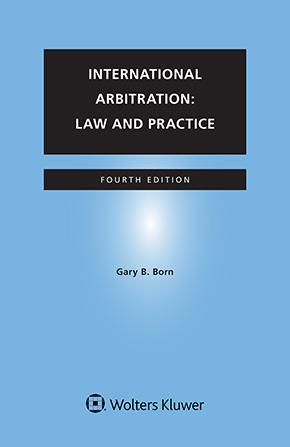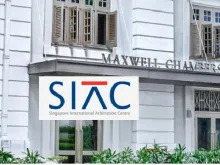The Gang of Four Rides Again: Pathological Clauses
July 30, 2013
“The Gang of Four” (and I’m not making this up) is the name taken by four of Europe’s leading arbitration institutions to describe their loose affiliation for discussing common issues and sharing best practices.
 Arbitration's Gang of Four
Arbitration's Gang of Four
The “Gang” consists of the German Institution of Arbitration (DIS), the Milan Chamber of Arbitration, the Arbitration Institution of the Stockholm Chamber of Commerce, and the Vienna International Arbitration Centre, as represented by their secretary generals Francesca Mazza (designate), Stefano Azzali, Ulfe Franke, and Manfred Heider.
They rotate their meetings among their seats, with the host organizing a public seminar on an important arbitration theme chosen for the cycle of all four meetings. This captures in perceptive light how the institutions manage similar issues in sometimes different ways. And the atmosphere of open dialogue gives the broader arbitration community an opportunity to contribute to the way they operate.
I had the honor of moderating the seminar at the Gang's recent meeting in Milan, a lively discussion about the problems created by pathological clauses and how each institution addresses them. This was the second session on this theme.
Pathology Through the Eyes of the Four Institutions
As most practitioners know, pathological clauses are arbitration agreements whose unclear or inconsistent wording runs counter to the setting in motion of a proceeding that will lead to an enforceable award.
According to the Gang’s leaders, these problems clauses are more frequent than most practitioners realize. "At least 30 percent of cases have a threshold dispute over arbitrability due to poor drafting of the arbitration clause,” stated one secretary general. Another responded that this just refers to those cases where the language is disputed, and that "some 70-80 percent of all arbitration clauses are pathological in some way."
The panelists all concurred that their institutions see a lot of badly drafted arbitration agreements.
As moderator, I had the good fortune that heavy lifting on this important topic had been done by my predecessor, Rolf Trittman, who kicked off discussion at the Gang’s seminar in Cologne this past April. Rolf astutely summarized how pathological clauses are managed by each of the four institutions, by tribunals appointed under their rules, and by the national courts in which they are located.
Notably, only two of the institutions (Stockholm and Milan) have rules that expressly authorize them to engage in a prima facie analysis of whether an arbitration clause is valid. In contrast, Rolf had pointed out, Vienna has a rule that only touches upon jurisdiction, Article 9(6), and the DIS rules are silent on the topic.
And yet, his research indicated, the absence of an express rule may be of little concern in Austria and Germany, as courts in those countries have an established record of finding an agreement to arbitrate even where the parties’ intentions were ambiguous. Rolf reported the same for Sweden. By contrast, the Milan rule could be seen as fitting a local need. Italy has only recently modified its civil procedure rules to encourages courts to recognize the validity of poorly drafted arbitration agreements, a change that is yet to be extensively tested.
The Epidemiology of the Pathology
Against the study by the previous session of the effects of pathological clauses, our Milan seminar focused on the different ways a clause can be problematic, the causes, and the role that institutions can play in preventing or at least in reducing the impact of drafting mistakes.
The panel considered various causes of defects in arbitration agreements: lack of expertise among the contract negotiators, imperfect compromises over which rules and institutions to apply, poor translations of otherwise good clauses, a natural tension between the parties' need for simplicity versus their desire to customize the arbitral process to suit the parties’ needs, and the occasional tendency to over-lawyer the language of a dispute clause.
The panel had no shortage of real-life examples to draw upon, ranging from parties agreeing to have their disputes resolved by an "abritrary institute" to one of my own favorites: a page-long arbitration clause specifying every conceivable detail of what should happen in the stages leading up to and during an arbitration except (rather importantly) a requirement to actually resolve disputes by arbitration.
The Gang's secretary generals also considered the range of defects, from those that can be easily overcome through an institution's involvement to others than can be fatal to the arbitral process. Below are some examples:
• Misnamed institutions and rules. Both the Vienna and Milan institutes noted that, within reason, this is not typically an obstacle. They each gave the humorous example of parties that had specified the “arbitrary court” of their cities, yet the courts had concluded this was intended to refer to their institutions.• Clauses that appoint one arbitral institution to administer proceedings under the rules of a different institution. Among the four institutions present, only the SCC indicated that they would conduct arbitrations under the rules of a different institution.
• Over-specificity of arbitrator requirements. For example, how would the institutions handle an arbitration clause that specified that a chair or sole arbitrator be fluent in Estonian, Chinese, and French, but not a national of any of those countries? Not easily. The leaders of all four institutions concurred that they would never ignore such a requirement without the agreement of the parties. As moderator, I pushed back on this, as clearly intended to refer their dispute to arbitration; but all four insisted that, when it comes to choice of arbitrator, they would feel bound by any party specifications.
Finally, the panelists all questioned whether there is more that they, as institutions, can do to reduce the apparent plague of pathological clauses, such as stressing the utility of model clauses (vs bespoke drafting) and developing more models to fit specific party needs.
For more on pathological clauses and how institutions are responding to the problem, catch the seminars scheduled for January 17, 2014 in Stockholm and March 14 in Vienna, when the Gang of Four rides again.

You may also like











A Layman
Isn't it better to allow jurisdictional questions, which include pathological clauses, to be dealt with by the arbitral panels when constituted? There are two reasons for that: one is that the issue of the clause has to be dealt with by the panel in any event; each arbitrator must be satisfied that his or her actions are founded by the agreement of the Parties. They cannot rely on the administrative opinion of the institution for that. The second reason is that the Court (certainly at the seat, debatably elsewhere) always has the last word on these matters. Arguably the institution is redundant for this purpose.